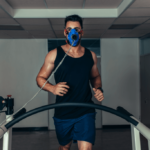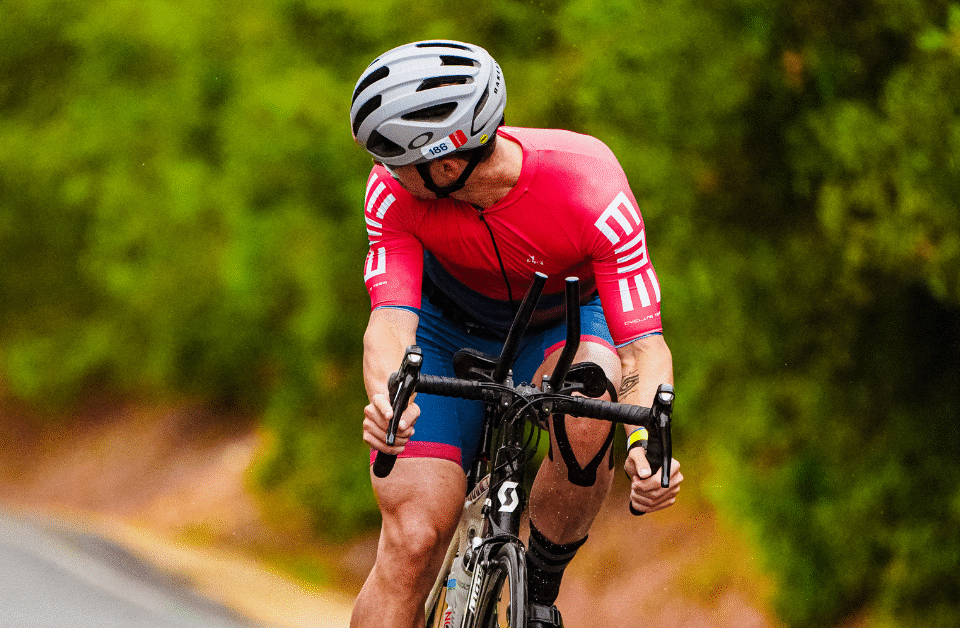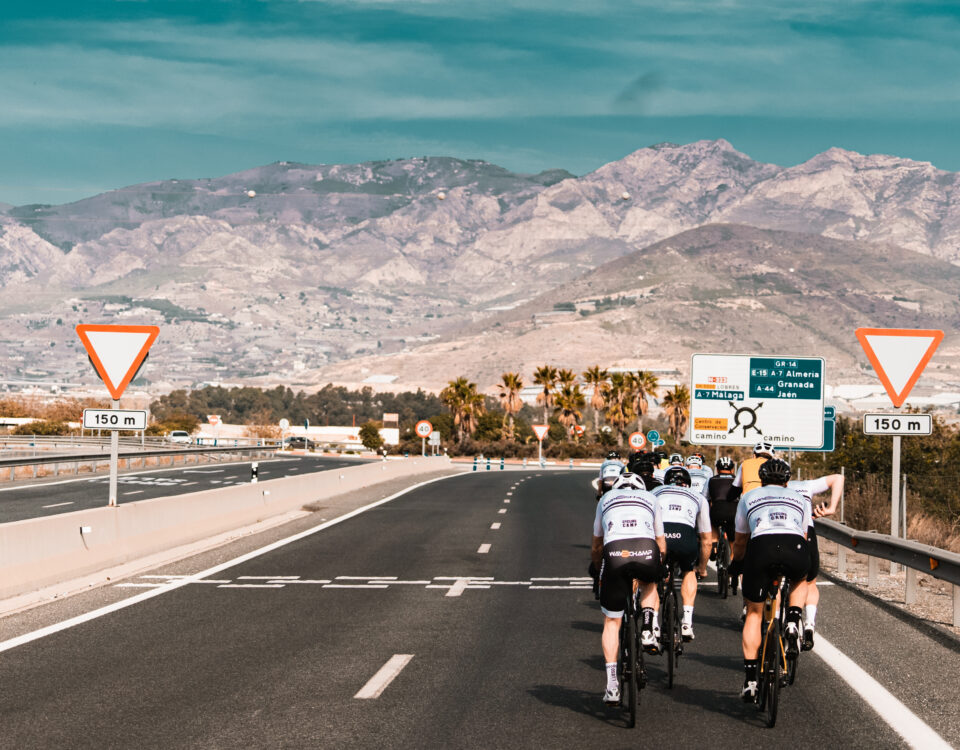
INSCYD performance testing for amateur cyclists
8 May 2025
The Guilt-Free Guide to Business Growth After 40
8 July 2025
In the world of cycling, it’s often the training plan that dictates what you should do today – regardless of how you actually feel. But what if, instead of a rigid schedule, your body set the rules? That’s exactly the potential behind HRV – heart rate variability.
This is a metric that tells you more than resting heart rate and predicts better than subjective feelings whether you’re ready for intense intervals or need rest. For a cyclist, it’s like having a personal overload sensor that simply didn’t exist before.
Instead of guessing whether you can train at high intensity, HRV lets you measure it. By monitoring the activity of your nervous system, it provides daily insight into your level of recovery and the internal stress your body is under.
The result? Training stops being a fixed schedule and becomes a flexible response to your current capacity. This approach is not only safer but also more effective – especially for those with limited time for recovery.
Instead of asking “Should I train today?”, learn to listen to the data from your own body. HRV isn’t about technology – it’s about the decisions you make every single day.
What will you find in this article?
- HRV – what your heart tells you before you feel it
- Why HRV matters to cyclists
- Groundbreaking research in HRV monitoring
- HRV in professional cycling
- HRV in amateur cycling
- The best HRV-based training sessions for amateur cyclists
- What are the tools for measuring HRV-based training
- Tips for cyclists on HRV-based training
- HRV-based training – summary
HRV – what your heart tells you before you feel it
In cycling, it’s not only about leg strength but also about the ability to listen to your body. One of the most precise ways to do this is through the analysis of heart rate variability – HRV (Heart Rate Variability).
How does it work in practice?
Contrary to popular belief, a healthy heart doesn’t beat like a metronome. The intervals between heartbeats are not identical – these micro-differences are what we call HRV. The more varied these intervals, the better. Why? Because it indicates that your nervous system is flexible and your body is ready for action or recovery – depending on what’s needed.
HRV reflects the activity of two branches of the autonomic nervous system:
- Sympathetic – mobilizes the body to fight or flee, increasing heart rate and muscle tension
- Parasympathetic – responsible for recovery, slowing the heart rate, and restoring balance
There’s a constant dynamic between them – HRV shows who currently dominates.
According to Dr. Tomasz Wiśniewski, a sports physiologist working with top Polish cyclists: “HRV is an extremely sensitive indicator of autonomic nervous system balance, reflecting the body’s ability to adapt and recover.”
What does HRV help monitor?
Different metrics are used to assess heart rate variability, but in a sports context, these are the most common:
- RMSSD (Root Mean Square of Successive Differences) – a statistical measure evaluating changes between consecutive heartbeats. Higher RMSSD means greater variability and better parasympathetic activity.
- SDNN (Standard Deviation of Normal-to-Normal intervals) – reflects the overall variability level by measuring the standard deviation of all normal intervals between beats.
- LF/HF ratio (Low Frequency/High Frequency) – a spectral analysis parameter showing the balance between sympathetic and parasympathetic nervous system activity.
- PNN50 – expressed as the percentage of pairs of consecutive R-R intervals differing by more than 50 milliseconds relative to the total number of pairs.
Why does HRV matter to cyclists?
Heart rate variability (HRV) is closely linked to cycling performance, as confirmed by numerous studies:
- Higher HRV is associated with better aerobic capacity – there is a strong correlation between high HRV and higher VO2max, translating to better endurance performance.
- Regular endurance training increases HRV – a consistently followed aerobic training plan raises heart rate variability as one of the body’s adaptive responses to exercise.
- A drop in HRV can indicate overtraining – a sustained decrease in HRV is often an early sign of training overload, appearing even before subjective fatigue or performance decline.
- Daily HRV fluctuations reflect the body’s adaptation – ongoing analysis of daily HRV trends allows you to assess readiness for training and helps decide whether to push harder or recover.
Who benefits most from HRV monitoring?
- People balancing demanding jobs with physical activity
- Individuals over 40
- Amateur cyclists with limited training time
- Those who have experienced overtraining in the past
- Athletes preparing for key competitions
Breakthrough research on HRV monitoring
Although heart rate variability as a physiological indicator has been known since the 1990s, only in recent years has its practical application in sports seen real progress.
Meta-analysis by Plews et al. (2024)
In 2024, a research team led by Dr. Daniel Plews from New Zealand published a meta-analysis shedding new light on the long-term effects of HRV-guided training. The analysis included 18 independent studies with over 500 endurance athletes – both amateurs and professionals.
The conclusions are clear:
- Athletes using daily HRV monitoring and adjusting training loads accordingly achieved 4–7% better results in endurance tests after at least 6 months compared to those following traditional methods.
- The risk of injury and overtraining symptoms was 31% lower in groups monitoring HRV.
- The greatest benefits were observed among amateurs who must balance sport with work and daily responsibilities – people exposed to higher stress fluctuations and with limited recovery opportunities.
Study by Rodriguez-Berzosa et al. (2024)
Although HRV is often associated with performance and training, recent research shows its role goes far beyond that – into the area of general health and immunity. A research team led by Dr. Elena Rodriguez-Berzosa from the Spanish Institute of Sport conducted a three-year observation of 250 endurance athletes, analyzing the relationship between HRV and health status.
The results were striking:
- Athletes whose HRV chronically remained below the age and gender norms were 80% more prone to upper respiratory tract infections.
- A sudden HRV drop exceeding 20% compared to the individual average preceded the onset of illness symptoms by an average of 3.8 days.
- A monthly downward trend in HRV correlated with elevated inflammatory markers, indicating potential overload or reduced immunity.
Study by Kiviniemi et al. (2023)
One of the most recognized and frequently cited studies on the effectiveness of HRV-guided training was conducted at the University of Jyväskylä (Finland) under the supervision of Prof. Aki Kiviniemi.
The study involved 45 endurance cyclists divided into two groups:
- Group A trained according to a classical periodization model
- Group B adjusted training intensity based on daily HRV readings
After two months of training, the results spoke for themselves:
- Cyclists in the HRV group improved their lactate threshold power by 8.5%, compared to 5.2% in the classical group
- The HRV group completed 24% fewer high-intensity sessions, indicating better efficiency with lower overall load
- Participants from the same group reported 17% lower subjective fatigue compared to the control group
HRV in professional cycling
In professional sports, results often come down to small margins – in cycling, it’s a matter of a few watts or seconds. That’s why World Tour teams are increasingly turning to tools that allow for precise management of load and recovery. One of them is HRV-guided training.
UAE Team Emirates
The team of cycling star Tadej Pogačar, UAE Team Emirates, known for its attention to detail in athlete preparation, was one of the first to permanently integrate HRV monitoring into their daily training routine.
Team doctor Dr. Adriano Rotunno mentioned that riders measure their HRV daily, even before getting out of bed.
The results? The system enables:
- Faster detection of body overload, even before symptoms appear
- Better recovery planning – both within the weekly training cycle and during multi-stage races
- Training personalization – adjusting intensity to the body’s actual condition, not just following a paper plan
- Managing adaptation to time zone changes during intercontinental travel
Tadej Pogačar himself admitted that thanks to HRV, he and the entire staff can make more accurate and well-informed decisions regarding the intensity of training sessions.
INEOS Grenadiers
The INEOS Grenadiers team bases its performance management on integrating multiple data sources. Heart rate variability is one of the key indicators but is not analyzed in isolation – it’s part of a larger, precise puzzle.
Dr. Xabier Artetxe, responsible for the team’s physiological preparation, explains that HRV is always analyzed alongside other indicators. Data on heart rate variability is compared with results from regular blood tests, stress hormone levels, sleep quality, and performance tests.
Additionally, INEOS Grenadiers uses machine learning algorithms that, based on massive datasets, can detect subtle changes in athletes’ physiological state before they become visible in sports results.
HRV in amateur cycling
Stories of professional athletes are inspiring, but it is amateurs who can benefit the most from HRV monitoring. Their daily lives are full of additional stressors – work, family, social obligations – all of which affect their ability to adapt to training. Let’s look at the stories of three amateur cyclists who revolutionized their approach to training thanks to HRV.
John, 39-year-old sports osteopath and father
John, a 39-year-old sports osteopath and father, had been combining his passion for cycling with a demanding professional and family life for several years. His training (5–8 hours per week) was squeezed in between patient visits, household duties, and weekend shifts. He rode regularly but struggled with fluctuating form, drops in motivation, and recurring infections.
What did HRV monitoring reveal?
After starting daily HRV measurements, John gained a new perspective on his body:
- His HRV was regularly below the average for his age, indicating chronic fatigue
- Evening training sessions worsened his sleep quality and caused an HRV drop the next morning
- Minor infections from his children, which he didn’t feel himself, and even small disruptions to his routine (e.g., skipped lunch, late return home) were reflected in the data
How did he modify his training?
- He gave up evening sessions in favor of morning or short midday rides
- He added short naps and breathing exercises as part of daily recovery
- On days when HRV was below his individual norm (80%), he either skipped training or chose recovery rides only
- He introduced a polarized model: only easy recovery rides or very intense intervals
What were the effects after a few months?
- His lactate threshold power increased from 215 watts to 240 watts
- No more form “crashes,” elimination of overload, better sleep
- Fewer infections
- 6th place in his age group at his first-ever race
The best HRV-based training approaches for amateur cyclists
Implementing HRV monitoring can bring huge benefits to any cyclist, but only if adapted to their lifestyle, experience, and training goals. There are three main approaches, each with different advantages and levels of advancement.
1. Threshold-based approach
Description:
A model based on dividing daily HRV readings into three zones:
- Green: normal or elevated value – body ready for intense training
- Yellow: slightly decreased – moderate effort or lighter session
- Red: significantly decreased – time for recovery or complete rest
How it works:
Individual thresholds are set based on the average and standard deviation from the last 7–10 days of measurements. The system recommends actions based on the specific daily reading.
For whom:
- Beginners using HRV
- People with limited time
- Cyclists with a stable lifestyle
- Recreational cyclists training 3–4 times a week
Advantages:
- Intuitive approach
- Low time commitment
- No specialist knowledge required
2. Trend-based approach
Description:
This model ignores single readings and focuses on the trend of HRV changes over time. The direction matters, not the daily value.
How it works:
- Upward trend: the body is adapting, training intensity can be increased
- Stable trend: continue the current plan
- Downward trend: necessary to reduce load and prioritize recovery
For whom:
- Cyclists with more experience
- Those training 5–6 times a week
- Athletes exposed to variable stress levels (e.g., work-related)
- Those training for long-distance races
Advantages:
- More resistant to daily fluctuations
- Better suited to amateur life realities
- Effective with varying stress levels
3. Hybrid approach
Description:
An advanced approach combining:
- Daily HRV measurements
- Trend analysis
- Sleep, stress, and RPE (subjective effort perception) monitoring
- Training data (e.g., TSS, power, heart rate)
How it works:
Requires consistency, an HRV and sleep monitoring device, a training diary, and either data analysis skills or collaboration with a coach.
For whom:
- Advanced amateurs and semi-professionals
- Those preparing for high-priority races
- Athletes with coaching support
- People interested in physiology and health monitoring
Advantages:
- The most precise decision-making
- Maximum training and recovery personalization
- Ability to detect problems (e.g., overtraining) well in advance
Which model to choose?
| Criterion | Best option |
| Lack of time / beginner | Model 1 (threshold) |
| Variable stress levels | Model 2 (trend) |
| Race preparation | Model 2 or 3 |
| Access to a coach / apps | Model 3 (hybrid) |
| Love for data and analysis | Model 3 |
What tools are available for HRV-based training monitoring?
There are many tools on the market that allow for daily heart rate variability (HRV) measurements. Below are the three main categories of devices and apps.
Smartphone apps using the phone’s camera
- Welltory
- HRV4Training
- Camera Heart Rate Variability
Advantages:
✔ Low entry cost
✔ Quick and easy accessibility
✔ No additional devices required
Disadvantages:
✘ Lower accuracy compared to ECG sensors
✘ The need to stay still and have good lighting conditions
✘ Limitations in measurements during activity
Chest straps with ECG sensor
- Wahoo TICKR X (with dedicated app)
- Polar H10 (with apps such as Elite HRV, Kubios, Polar Beat, HRV4Training)
- Garmin HRM-Pro (with Garmin Connect app)
Advantages:
✔ Very high precision (ECG recording)
✔ Ability to record HRV during exercise
✔ Measurement reliability comparable to laboratory standards
Disadvantages:
✘ Less comfort – daily use of a chest strap required
✘ Additional equipment and potential need for calibration
Wearable devices for all-day use
- Garmin
- Polar
- Whoop
- Oura Ring
Advantages:
✔ Automatic measurement, no need for daily manual testing
✔ Long-term trend and context analysis (sleep, stress, activity)
✔ High convenience for everyday use
Disadvantages:
✘ High purchase (or subscription) cost
✘ Not all models provide raw HRV data
✘ Limited options for precise comparative testing
How to interpret the results?
Collecting data is useless if you don’t do anything with it. Here are four fundamental rules for effective result interpretation.
1. Establish your personal baseline:
At the beginning, for about 3 weeks, focus solely on collecting data. During this period, you shouldn’t react to individual readings but create a reference base that considers your natural resting HRV fluctuations.
2. Identify factors influencing your HRV:
Once you have your first set of data, start analyzing how various factors – nutrition, sleep, training, infections, stress levels, alcohol, etc. – affect your HRV.
3. Recognize natural fluctuations:
HRV is not a static value. Even without a clear cause, it can vary from day to day by 10-15%.
The most important indicators are:
- Multi-day trends – a 3–4 day HRV decline is a warning signal
- Large deviations (>20%) from the norm – especially if accompanied by subjective fatigue symptoms
4. Combine data with intuition and subjective feelings:
Over time, you’ll notice that HRV confirms how you feel or, on the contrary, signals changes before you consciously notice them.
For this reason, it’s worth:
- Assessing your well-being daily (fatigue scale, sleep quality, motivation)
- Keeping a simple journal (e.g., in an app) with notes about the previous day
- Comparing subjective feelings with HRV values
Tips for cyclists on HRV-based training
| Category | Beginner (1–2 years) | Intermediate (2–5 years) | Advanced (5+ years) |
| HRV approach | Simple zone system (green/yellow/red) | Weekly trend analysis | Hybrid model: daily data + trends |
| Measurement tools | Mobile app (e.g., HRV4Training) | More precise equipment – chest strap or 24/7 device | Advanced 24/7 devices (Oura, Whoop) |
| Monitoring goal | Identifying good days for intense training | Planning training blocks based on HRV changes | Comprehensive management of load and recovery |
| Response to low HRV | Avoid intense efforts | Careful adjustment of load and recovery | Plan adjustment based on deeper analysis and seasonal context |
| Additional actions | Keeping an HRV + RPE (subjective feeling) journal | Combining HRV with sleep quality and fatigue tracking | Cooperation with coach/physiologist, seasonal analysis |
| Individual threshold adjustment | Using default zones | Experimenting with personal HRV thresholds | Dynamically adjusting thresholds based on season stage |
HRV-based training – summary
HRV-based training is a modern approach to cycling that revolutionizes how effort is planned. Instead of blindly sticking to a rigid plan, you can adjust training intensity daily based on your current recovery status.
HRV measures the differences between heartbeats, reflecting the activity of the autonomic nervous system (sympathetic and parasympathetic). High HRV indicates readiness for effort, while low HRV signals overload or the need for recovery.
By monitoring heart rate variability daily, you can train smarter – regardless of your experience level.
Thinking about cycling training? If you want to take your riding to the next level, we have a great option for you:
- Individual coaching – work one-on-one with an experienced coach who will continuously adjust your training load to your needs and support your development as a cyclist.
Bibliography
- Kiviniemi, A. M., Hautala, A. J., Kinnunen, H., & Tulppo, M. P. (2023). Individualized training based on heart rate variability in endurance athletes. Medicine & Science in Sports & Exercise, 55(7), 1288-1295.
- Plews, D. J., Laursen, P. B., Stanley, J., Kilding, A. E., & Buchheit, M. (2024). Heart rate variability and training adaptation in endurance athletes: A meta-analysis. Sports Medicine, 54(3), 501-515.
- Rodriguez-Berzosa, E., Fernandez-Lucas, J., & Martinez-de-Quel, O. (2024). Relationship between heart rate variability and upper respiratory tract infections in endurance athletes: A 3-year prospective study. Journal of Sports Medicine and Physical Fitness, 64(2), 198-205.

